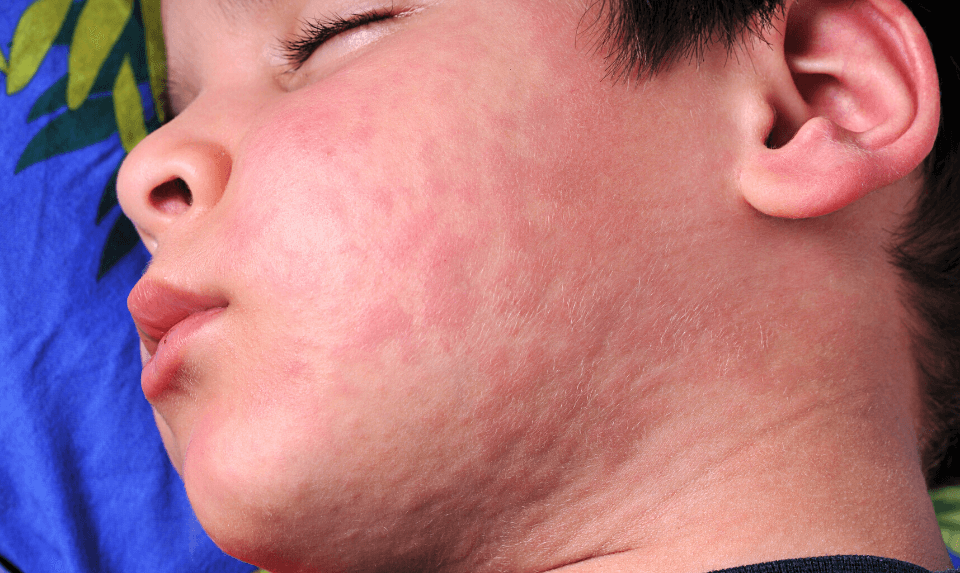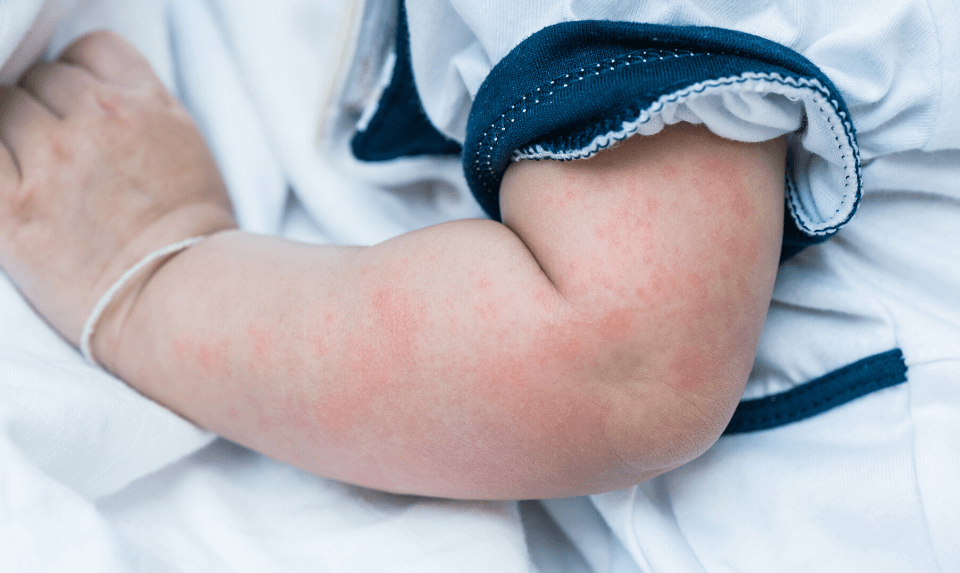

Hives in toddlers are little raised, red patches of skin called wheals (or welts). They come about in groups on any part of the body and may seem like mosquito bites. They are frequently itchy, but occasionally as well sting. The medical phrase for hives is urticaria (er-tuh-care-ia).
Hives are frequently an indication of an allergic reaction to things similar to food or a bug sting. Hives are awfully common – one out of every five individuals will have hives at some time in their life. Treatment includes medication and avoiding common triggers. The triggers may differ with each child.
Questions About Pediatrics? Get Them Answered.
Have questions and concerns? Need advice about pediatrics?
Ask us! The team at Blackwood Family Medicine is here to help you.
Signs and Symptoms of Hives in Toddlers


- If the child has hives, they might have raised circular welts that seem like mosquito bites. The welts are reddish on outside and white in the centre.
- Hives are usually very itchy, however, it can also sting. A welt frequently lasts around 24 hours prior to fading with no trace.
- The welts come out in batches or clusters. New batches may build up as old areas fade away.
- Frequently the welts stick together to form bigger swellings. The area of the affected skin may differ in size from fairly small to as huge as a dinner plate.
- Hives in toddlers will typically go away in a few days, but may possibly last weeks.
- Hives can look or feel unpleasant, but typically they are not dangerous.
Anaphylaxis
Occasionally children have a more serious allergic reaction identified as anaphylaxis. Symptoms of anaphylaxis include:
- Wheeze or persistent cough
- Difficulty with breathing and/or noisy breathing
- Loss of consciousness and/or collapse
- Swelling and/or tightness in the throat
- Difficulty talking or hoarse voice
- Swelling of the tongue
- Becoming pale and floppy (infants/young children).
Call an ambulance immediately if your child has symptoms of anaphylaxis.
If your child experienced anaphylactic reactions before, you may be advised to have an adrenaline autoinjector (e.g. an EpiPen) with you every time. The child might also wear a medical alert accessory or bracelet to let individuals know what may cause them to have an allergic reaction. Talk about this issue with your GP.
What Causes Hives in Toddlers?
Hives are a skin rash typically caused by an allergic reaction. Hives can rarely occur without a trigger, but frequently occur when the immune system responds to a substance (such as a food or bug venom) as if it were poisonous (toxic). Hives take place when blood plasma leaks from the blood vessels into the skin. This happen after a chemical called histamine is released.
The following can hives in toddlers:
- Chemical in food, medicines, or plants.
- Viral infections (e.g. a cold or hepatitis)
- Insect stings or bites
For most children, each attack of hives will become more severe and intense if they are repeatedly exposed to the same trigger.
Typically tests are not performed because frequently it’s not possible to know what triggers hives in children.
Care at Home
Usually, hives in toddlers can be carefully managed at home, with no need to see a doctor. A pharmacist may give you with a few antihistamine medications for relief of symptoms through an episode. The best action for hives is to keep away from the cause or trigger, yet this is not always possible.
You can help out treat your child’s hives by:
- Avoiding identified triggers for your child
- Avoiding things that will make your rash worse, for example; sunshine, heat and hot showers
- Applying cool compresses (a face washer, cloth nappy or clean tea towel soaked in cool water), that may aid reduce the itching and stinging.
When to See a Doctor
If your children continue to have hives for over six weeks, assist them to see your GP.
Actions for severe or recurrent hives may include:
- Medications like corticosteroids, which can decrease the immune system’s retort to the triggers
- Checking that the rash isn’t caused by an different disorder
- Prescribing non-sedating antihistamines to give relief from itching – these may be incredibly useful if given at bedtime.
- If at any time the hives are connected with other symptoms (high fever, bruising, purple skin discolouration or joint pains), assist them to see a doctor.
Main Points to Remember
- Hives are a skin rash involving red, raised wheals that are normally itchy.
- Hives in toddlers are very regular and are frequently harmless.
- Treatment options are; avoiding identified triggers and medications such as antihistamines and corticosteroids.
- This kind of skin rash is an allergic reaction, which means the immune system reacted to a substance as if it were poisonous.
- Call an ambulance if your child has signs of anaphylaxis.






